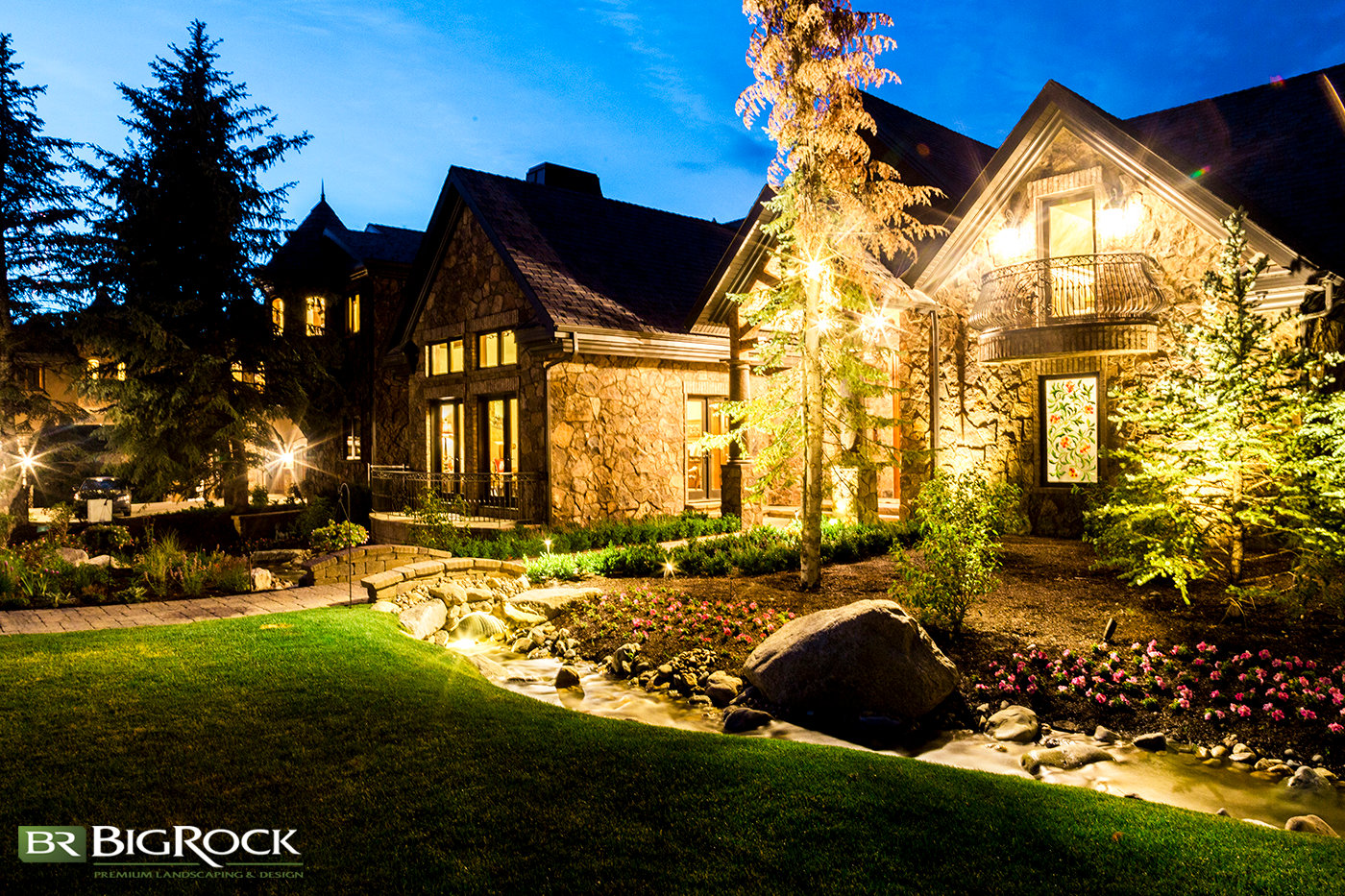
Mountain Style Landscaping: How To Create A Natural Look For Your Home
Mountain-style landscaping isn’t just for people who live in the mountains! If you’re looking to add some natural beauty and charm to your yard, mountain-style landscaping is the perfect way to transform a backyard or garden area into a tranquil oasis. You don’t need a lot of space to get started, and if you already have a lawn, don’t worry, there are plenty of ways to work a natural mountain landscaping style into any open grassy space. So, get inspired by our mountain landscaping ideas, and start creating your own little piece of paradise!
What Is Mountain Style Landscaping?
Mountain-style landscaping certainly sounds nice, but what exactly is it? Mountain-style landscaping is a rustic style of landscaping that uses local materials and native plants to create a naturalistic look. This contemporary design philosophy emphasizes sustainability, minimalism, and the use of local flora and fauna. Incorporating drought-tolerant plants to reduce water usage, rainwater harvesting, or solar-powered outdoor lighting helps reduce energy consumption. The use of clean lines and simplified forms and structure creates a harmonious balance between landscapes and architecture without overcomplication or fussiness.
You don’t have to own a home in the mountains to utilize native plants and local materials–although this type of contemporary mountain-style landscaping is especially well-suited for Utah’s elevation and arid climate. You can create a natural look even in the heart of the city, and even in small spaces, like a small garden or front yard.
Mountain-style landscaping can include things like using natural stone from a nearby quarry for rock walls and paths to using native plants in garden beds or using logs and branches for fences and trellises. When done well, mountain-style landscaping can create a beautiful and inviting outdoor space that feels like an extension of the home. You might be looking out at the flat expanse of your yard and thinking that mountain landscaping just won’t work for you. While slopes and hilly terrain can certainly add to this type of landscaping, it’s more about using natural elements and plants to create a seamless look and feel between your home and its natural surroundings.
This type of rustic landscaping is also a great way to reduce the impact of the home on the local environment. By using local materials, mountain-style landscaping helps to reduce transportation costs and emissions by supporting local businesses.
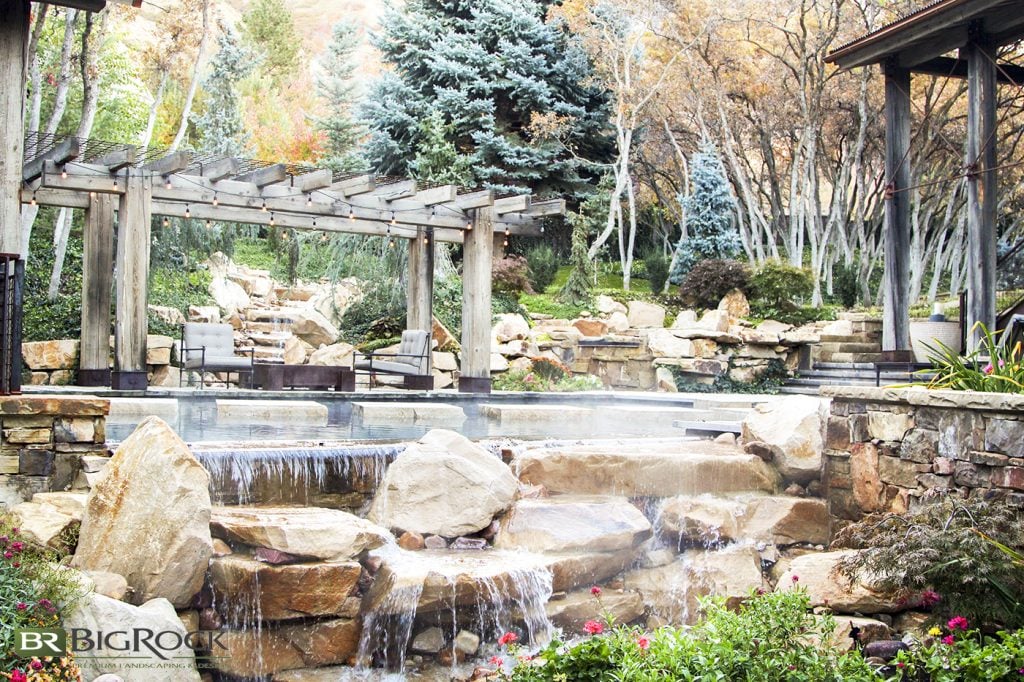
How To Use Plants And Trees To Create Natural Landscape
When you’re landscaping your home, it’s important to use organic shapes. Plants and trees are called softscape, and when found in natural landscapes, they take their design cues from nature. You don’t want a lot of straight lines and hard edges. Instead, you want the landscape to flow and merge with the natural surroundings. This can be done by using plants and trees that grow well in your area, and by using design principles that mimic nature.
Evergreen Trees
Austrian Pine is a great choice for arid mountain landscapes. This evergreen beauty reaches a mature height of 60 feet and is extremely hardy. It can handle the heat, drought, and clay soils that dominate Utah landscaping areas.
Bosnian Pine is perfect for narrow regions. This evergreen tree is a great choice in Utah’s mountain landscape, reaching 40 feet tall and only 10 feet wide at full maturity. Due to its slightly smaller stature and narrow profile, this pine tree is great for narrow areas and can be helpful with noise control when densely planted.
Deciduous Trees with a Splash of Color
Pacific Sunset Maple offers a splash of fall color and is adaptable to many different temperatures and soil conditions.
Streetspire Oak has dark green foliage that will turn a beautiful, rusty red in fall. As the weather turns, it also attracts a variety of wildlife when its acorns drop.
Shrubs that Thrive in Mountain-style Landscaping
When it comes to native plants that thrive in mountain-style landscaping, consider shrubs like:
- Willow
- Elderberry
- Huckleberry
- Rabbit Bush
For a splash of color, try any of these sun-loving perennials that are drought-tolerant and thrive naturally in the Utah climate:
- Goldenrod
- Sunflower
- Daisies
- Shirley Poppy
- Cornflower
- Pink Ladies
If you are considering incorporating mountain landscaping ideas, use plants and trees that provide a variety of different textures, foliage, and sizes. Instead of sharp corners and angles, think of organic lines and overlapping areas that spill into pathways or other hardscaped areas. Consider how you want your yard to look during all seasons and incorporate plants that will give variety, texture, and beauty each season.
How To Use Rocks To Create A Natural Look
There’s nothing more basic in landscape design than rocks. So if you’re looking for a way to add a natural touch to your landscape, consider using rocks. Rocks can be used in a number of ways to create a mountain-style landscape. For example, you can use them to create pathways, borders, or even water features. Rocks also work well for drainage and erosion control, as natural dividers between different sections of your yard or to accentuate other features in your landscape, such as flowers or shrubs. Best of all, rocks are relatively easy to find and work with, so you can get started on your mountain-style landscaping project right away.
There are diverse ways to use rock as a mountain-style hardscape. Use river rock and pea gravel in flower beds rather than mulch, or use them to line a pathway. Homeowners can also use rocks to replicate the look of natural landscape design by laying rocks along borders or randomly placed through the yard as a focal point or in small groupings accented by small shrubs and flowers.
While slab rock, made from sandstone, slate, limestone, or quartzite, is the perfect natural material for building patios or walkways in a mountain-style landscape. Shaped like flat slabs, this type of rock is extremely flat and level while visually pleasing. Boulders make excellent retaining walls or rustic seating around a fire pit or swimming pool. They are also widely used for creating layered landscaping.
Helpful Tips To Create A Natural Look
Use these simple tips when incorporating rock into your mountain-style landscaping.
Create naturalistic rock formations. Blend the rocks and boulders with the surrounding vegetation by creating transitional spaces. Use smaller rocks, gravel, or ground cover to soften the edges and create a seamless transition between the rock formations and the surrounding landscape.
Create natural focal points with rocks. Take the time to observe natural rock formations around you. Notice how rocks and boulders are naturally arranged and interact with the surrounding landscape. Try to replicate these patterns and relationships in your design. Install outdoor lighting to highlight the rock formations and boulders at night strategically. Proper lighting can enhance the visual impact and create a dramatic effect.
Use boulders when possible. Look for rocks and boulders with interesting shapes, textures, or colors. Before installing rocks and boulders, spend some time planning their placement. Consider the overall design, flow, and balance of the landscape. Experiment with different arrangements and positions to find the most visually pleasing composition.
Mountain Style Hardscaping: Incorporating Stone Patios, Fire Pits, and Outdoor Structures
Incorporating hardscaping elements like stone patios, fire pits, and other outdoor structures into your mountain-style landscaping design can enhance your outdoor living space and create functional gathering areas that complement your natural surroundings.
Stone Patios
Stone patios are a natural extension of your indoor living pace, giving you more room to cook, dine, and entertain. By carefully planning and selecting the right elements, you can create functional and beautiful outdoor spaces seamlessly integrating with the natural environment. Well-designed mountain-style hardscaping elements that utilize the colors and style of your existing home will seamlessly blend with the natural surroundings, enhancing the overall aesthetic of the outdoor space. Natural materials, such as stone or wood, create a durable, low-maintenance, yet harmonious connection between the built environment and the existing landscape.
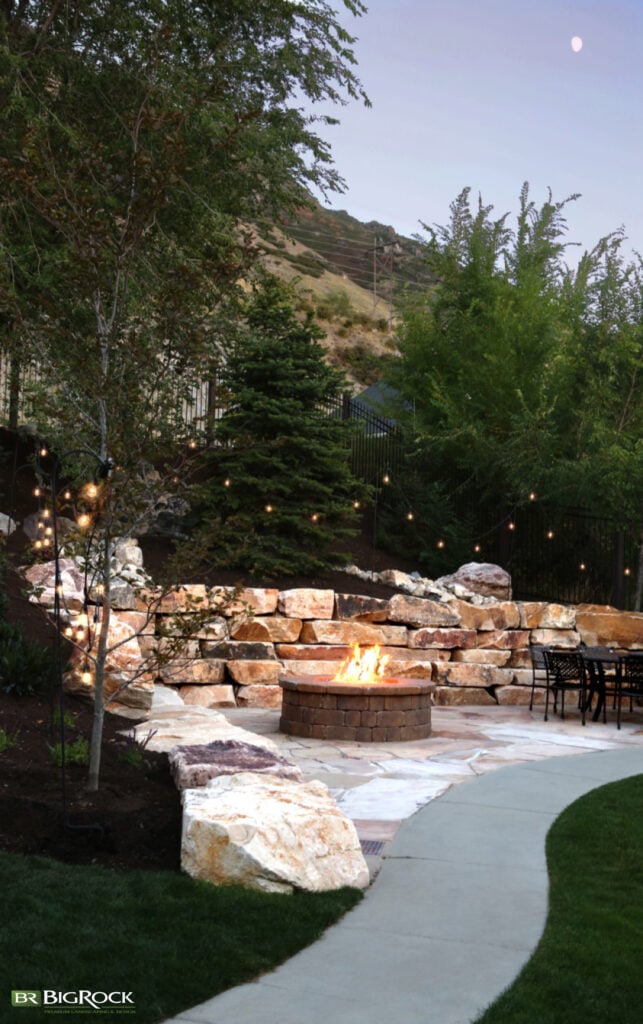
Fire PIts
Fire pits create warmth and ambiance that can extend your outdoor season into the cooler fall months and add a functional element to your outdoor space. Often built with natural materials like stone or brick, fire pits become a welcome focal point in most mountain-style landscapes. They offer yet another area where you can dine with family or host gatherings.
Pergolas
Pergolas provide necessary shade during those hot Utah summer afternoons while giving your landscape visual interest and added functionality. Pergolas can provide additional seating and dining areas for entertaining or relaxing with friends and family on that long-awaited weekend. Usually made of wood, Pergolas are made from long-lasting natural materials that can withstand Utah’s harsh winter climate.
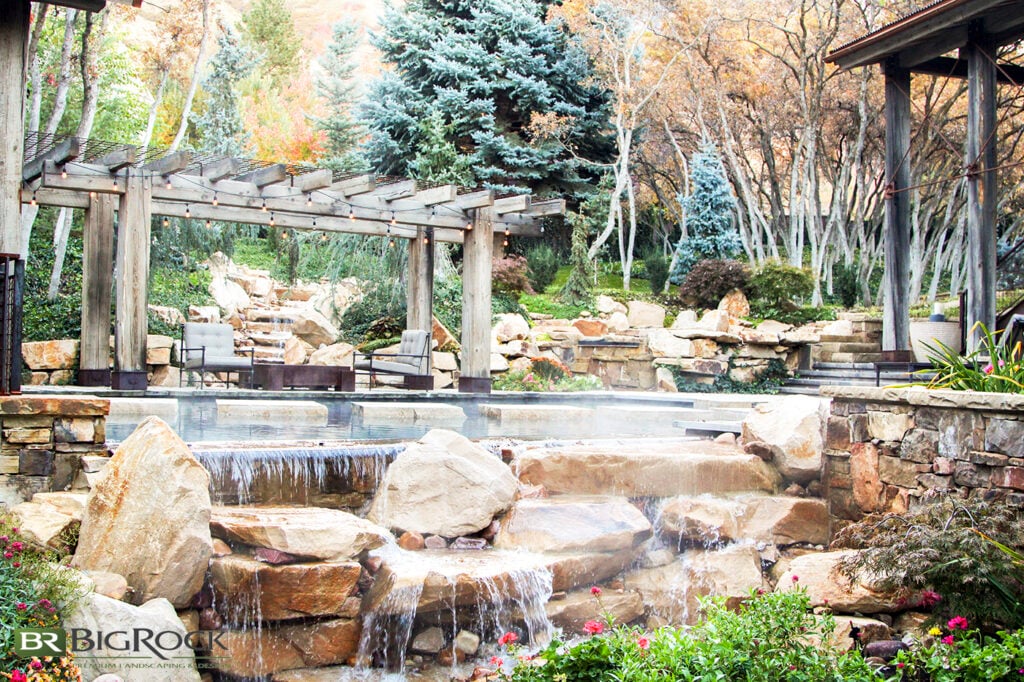
Use Native Plants for a Sustainable Landscape
Native plants thrive in native landscaping because they require less water and maintenance. Perfectly suited for Utah’s hot and arid climate, these plants flourish with less water and little maintenance. In addition to conserving water and time, using native plants in your natural landscape design will support the local ecosystem by attracting pollinators like bees and birds and providing food like nuts, seeds, and berries for a variety of high desert animals that call Utah home.
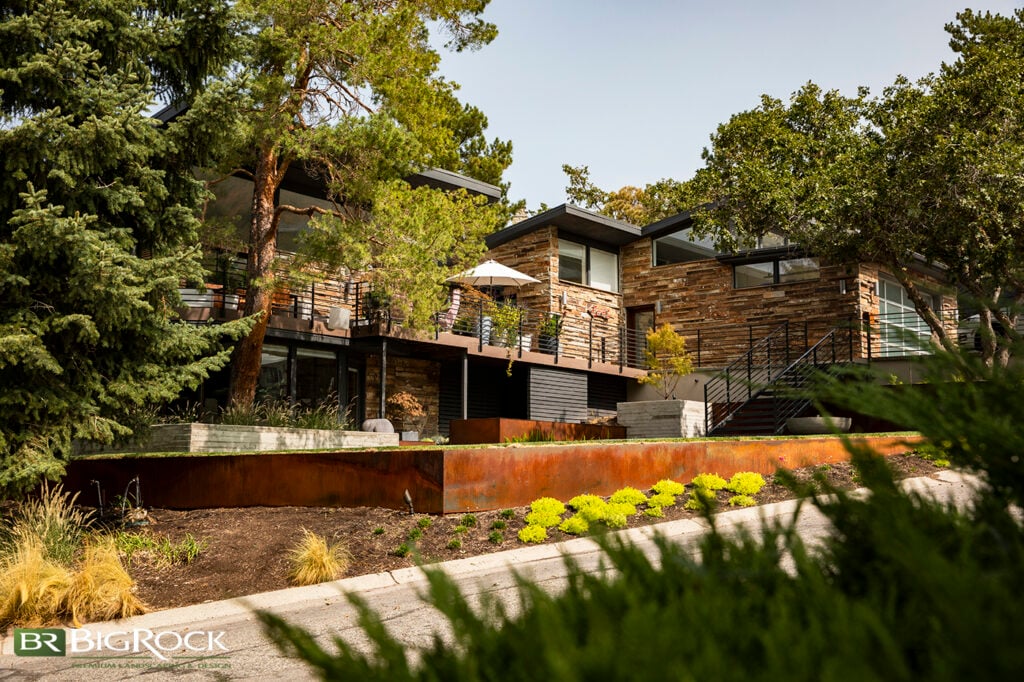
Landscaping Tips for Mountain Homes
If you’re considering installing natural landscaping that is both eco-friendly and low-maintenance, these tips will help you get started:
- Use organic fertilizers and compost. This will improve your soil health and promote healthy plant growth without all the nasty chemicals.
- Use irrigation systems. Instead of turning the soaker hose on, think about installing a drip irrigation system directly to plant roots, reducing water waste. You can also harvest and store rainwater to water landscaping.
- Use Xeriscaping. This is how Mother Nature does it, and modeling landscaping design after Mother Nature will automatically include drought-tolerant, native plants and mulch to retain soil moisture and conserve water.
Integrating Water Features: Ponds, Streams, and Waterfalls
If you want fun landscaping ideas for mountain homes, add a water feature to create a soothing and natural atmosphere. Mountain-style water features are often ponds, waterfalls, or fountains–but they can also be as simple as a birdbath. By incorporating water elements thoughtfully, you can transform your outdoor living area into a peaceful oasis that invites relaxation and connection with nature.
Whether it’s a pond off your backyard stone patio, a meandering stream that runs through your backyard, or a fountain strategically placed in the front or backyard, water features mimic the natural elements found in nature, evoking a sense of tranquility and connection to the environment. By using natural materials and incorporating plants and rocks around the water feature, you can further enhance this integration. If you are considering adding a water feature to your landscaping design, consider the following:
Sourcing And Maintaining Water Supply
Consider utilizing natural water sources such as springs, groundwater, or rainwater collection systems if available. These sources can provide a sustainable and consistent water supply for your feature. Alternatively, you can create a closed-loop recirculating system using a pump to circulate and filter the water continuously. This minimizes water usage and ensures a controlled water supply.
Balancing Aesthetics And Functionality
Consider the size and scale of your outdoor space when determining the dimensions of your pond, stream, or waterfall. Strive for a balance between the feature and the surrounding landscape, and try to design your water feature to mimic the look and feel of natural water elements. Use irregular shapes, varied depths, and natural materials such as rocks and boulders to create a more authentic and visually appealing aesthetic. Incorporate native plants and create habitats that attract wildlife, such as fish, birds, and amphibians. This not only adds to the aesthetics but also promotes a healthy ecosystem and enhances the natural appeal of your feature.
Working with the existing topography:
Study the existing topography of your site to identify natural slopes, depressions, or low-lying areas that can be utilized for your water feature. Adapting your design to the existing terrain will help minimize excavation and ensure a more natural integration. If needed, modify the terrain to accommodate your water feature. Excavation may be required to create ponds or streams; grading can help create gentle slopes and cascades for waterfalls. You’ll need professional guidance here to ensure proper drainage and water flow.
Working with experienced professionals, such as landscape designers or pond builders, can provide valuable guidance throughout your water feature’s design and construction process. They can help you navigate the technical aspects, address specific challenges, and ensure the successful integration of your vision with the existing landscape.
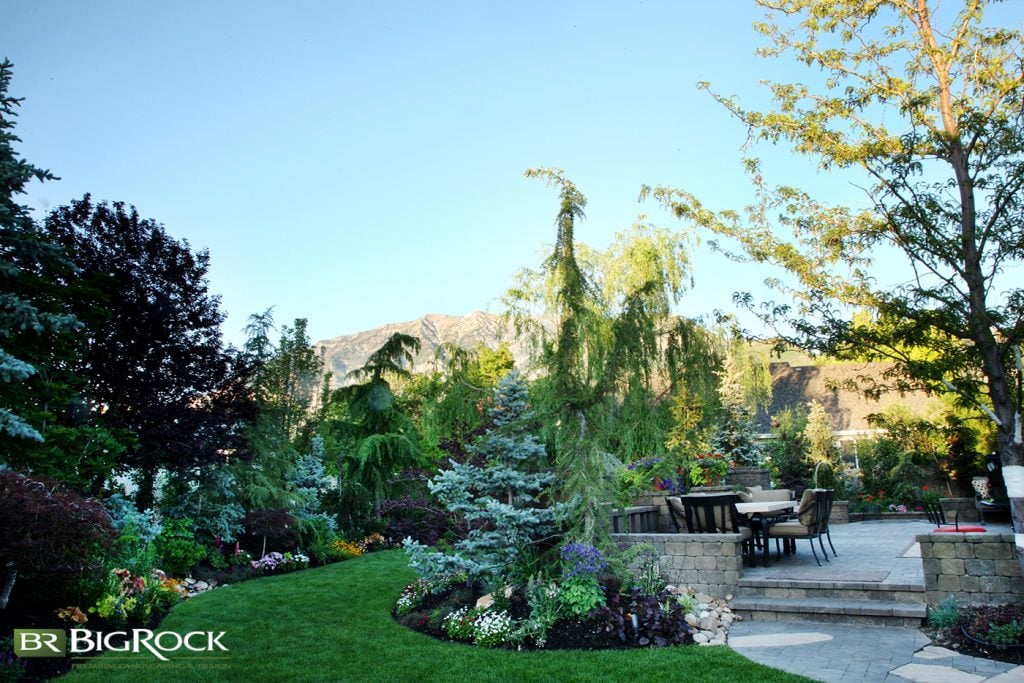
7 Mountain Landscape Ideas: Embrace The Wilderness In Your Own Backyard
We don’t deny there is something satisfying about perfectly clipped hedges and crisply edged lawns, but there is also something carefree and inviting about a naturally landscaped home. If you are ready to welcome a little bit of the wilderness into your backyard, here are a few ideas to get the perfectly curated, informal mountain landscape.
Use Repetition
Selecting a few native plants that appeal to you, and working them into your landscaping on repeat will create unity and flow. Repetition is an easy landscape design principle that anyone can use to create a cohesive design. Consider using ornamental and native grasses in place of manicured lawn. Grasses provide movement and a soft, carefree form that easily finds a home in any natural design.
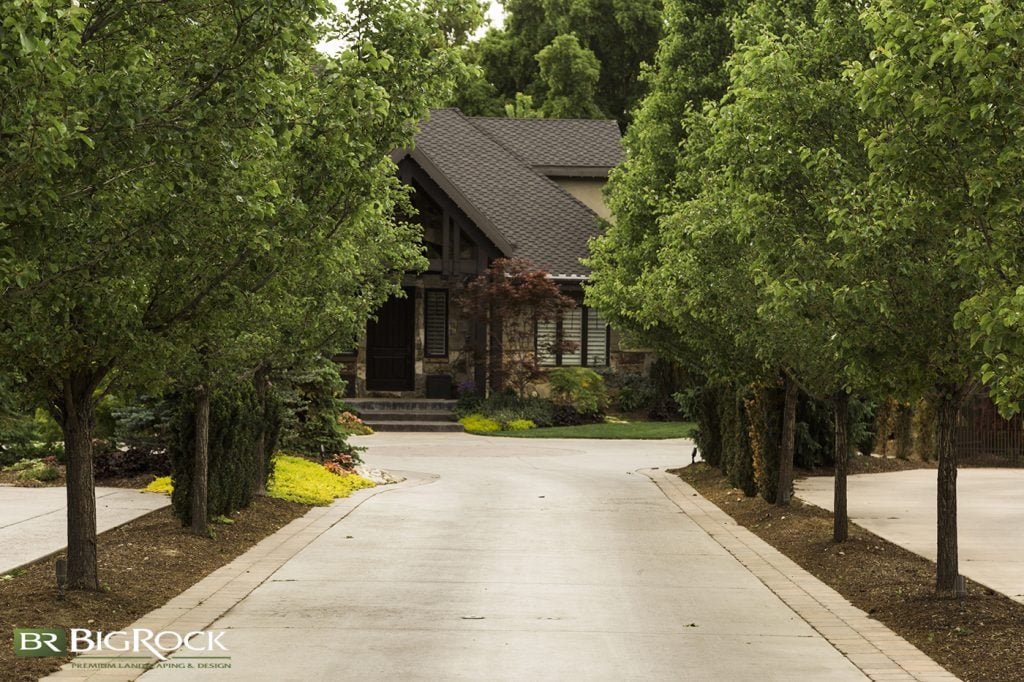
Choose A Color Palette
Color plays an important role in the way we feel. Creating a color palette might feel overwhelming at first, but it’s not too difficult. The most important thing is to begin with a limited color palette, and by this we mean, just pick one color or shades of the same color. Keep it simple. Do you prefer a relaxing vibe? Choose cool colors like blue, purple, and white. Do you want a vibrant and energizing vibe? Go for red, orange, and yellow. Finding it hard to pick a color? Get inspiration from your home décor or clothing to fine-tune colors that you are already drawn to.
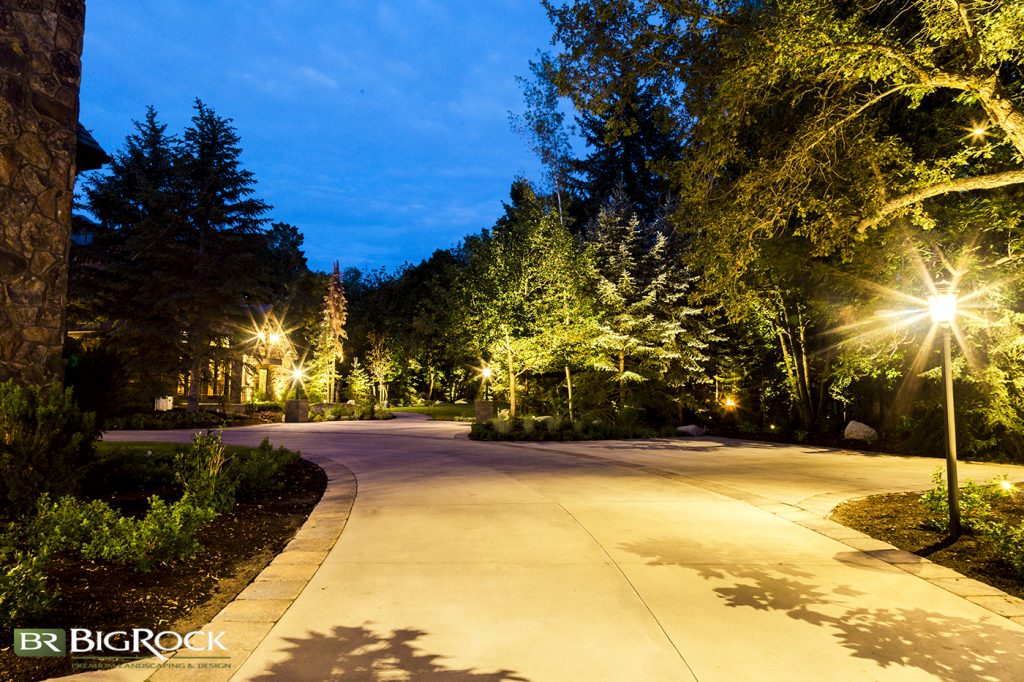
Plant In Groups And In Odd Numbers
Planting in groups of odd numbers (think 3, 5, and 7) is a common way to create design impact. When designing on a large scale, a few plants or one tree here or there will simply not have enough impact to truly ground your design. This principle also works well in smaller spaces. We are serious about this! Never plant less than three of any type of plant.
Connect Your Outdoor Spaces
Creating paths and walkways with natural stone or rock is a great way to incorporate mountain-style landscaping. Natural stone comes in a variety of different colors and textures and in a range of prices. You can also use natural elements like wood and stone to create focal points that lead a viewer through your landscape. Things like garden sculptures, benches, arbors, and fire pits lend a unique balance to any natural landscape.
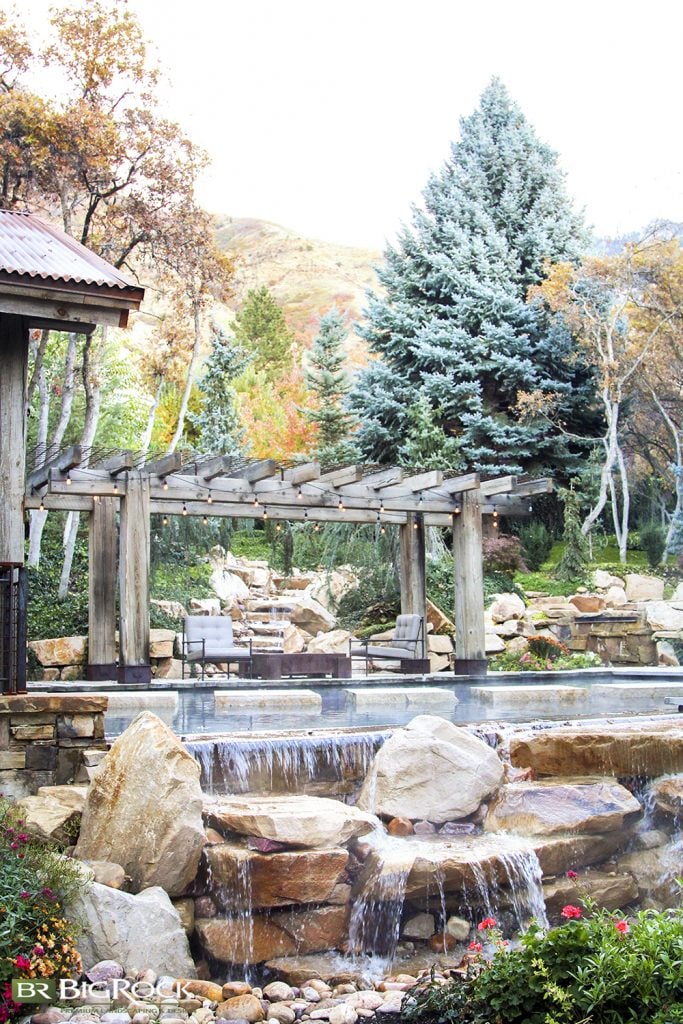
Research, Research, and Research
Steven R Covey said it best when he said, “Begin with the end in mind.” When tackling a mountain-style landscape design, research is the key to a successful design. Start by researching trees and plants that grow in your native environment. You’ll want to make a wish list and measure the area you plan to landscape to get an idea of the scope of your project. Then jump right into designing on paper, making sure to use your color palette to guide you, as well as grouping your plants, shrubs, and trees in odd-numbered plantings to create interest and impact.
Delight With Texture
In our humble option, texture is one of the most overlooked landscape design principles. Homeowners often rely too much on flowering shrubs and plants to add interest and variety to a landscape. Adding contrasting textures is one of the simplest and most effective ways to add interest and variety to a mountain landscape. Try placing plants with opposing textures next to each other in your design. If you love a plant that has bold, large leaves, plant it next to a plant with tiny leaves. Or if you have a plant with shiny leaves, pair it with a plant with matte leaves. Adding in opposing textures will make your landscape look interesting and beautiful even during the off-season.
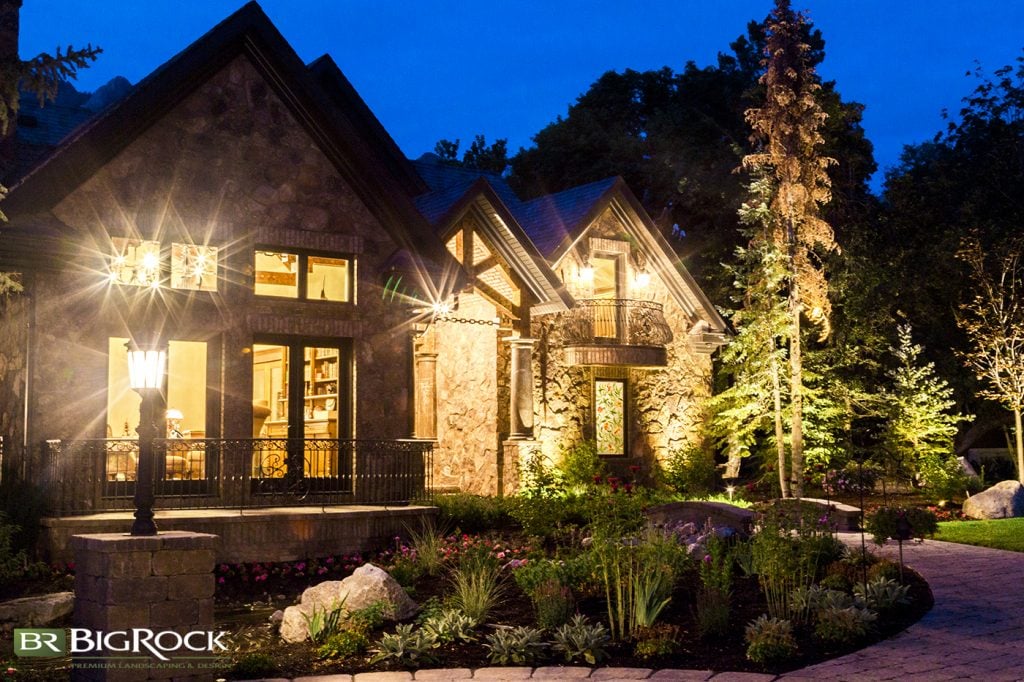
Add Layers
This is an advanced garden principle, but if you’re ready for it, go ahead and jump in. Landscape layering works wonderfully in mountain-style landscaping because most likely, you already have natural layers surrounding your home. This is not for the beginner landscape designer and takes careful thought and planning to avoid having your yard look disorganized or messy.
With landscape layering, you can stagger groupings of different trees, shrubs, and plants in the foreground, middle, and background of your property, but you’ll need to pay attention to full-grown plant sizes when doing so. To create a solid layered look, build beds that are at least 6 – 12 feet deep.
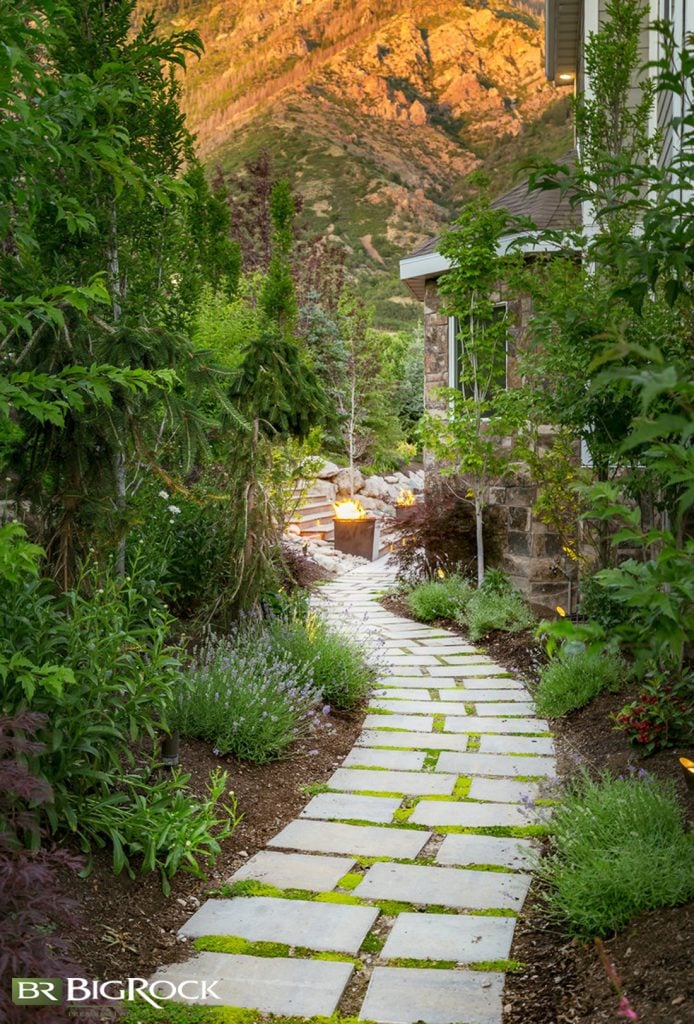
Big Rock Landscaping: Your Mountain Landscaping Experts
If you’re feeling overwhelmed, we’re here to help. You can expect only the best with Big Rock Design and Landscaping Services.
“Big Rock did my landscaping from design to finish and it is wonderful. The vision, creativity and expertise was on point. Always available to answer questions or go over things, and always professional.”
-Heather Frazier
We work hard to maintain top-level expertise in all aspects of landscape design and installation. From gorgeous landscape designs to transparent company and client collaboration, we provide landscaping services that just can’t be beaten. Check out our residential landscaping portfolio for additional inspiration; you won’t be disappointed. Contact us today for a consultation–together, we can create the mountain-style landscape you’ve been waiting for!


Leave a Reply
You must be logged in to post a comment.